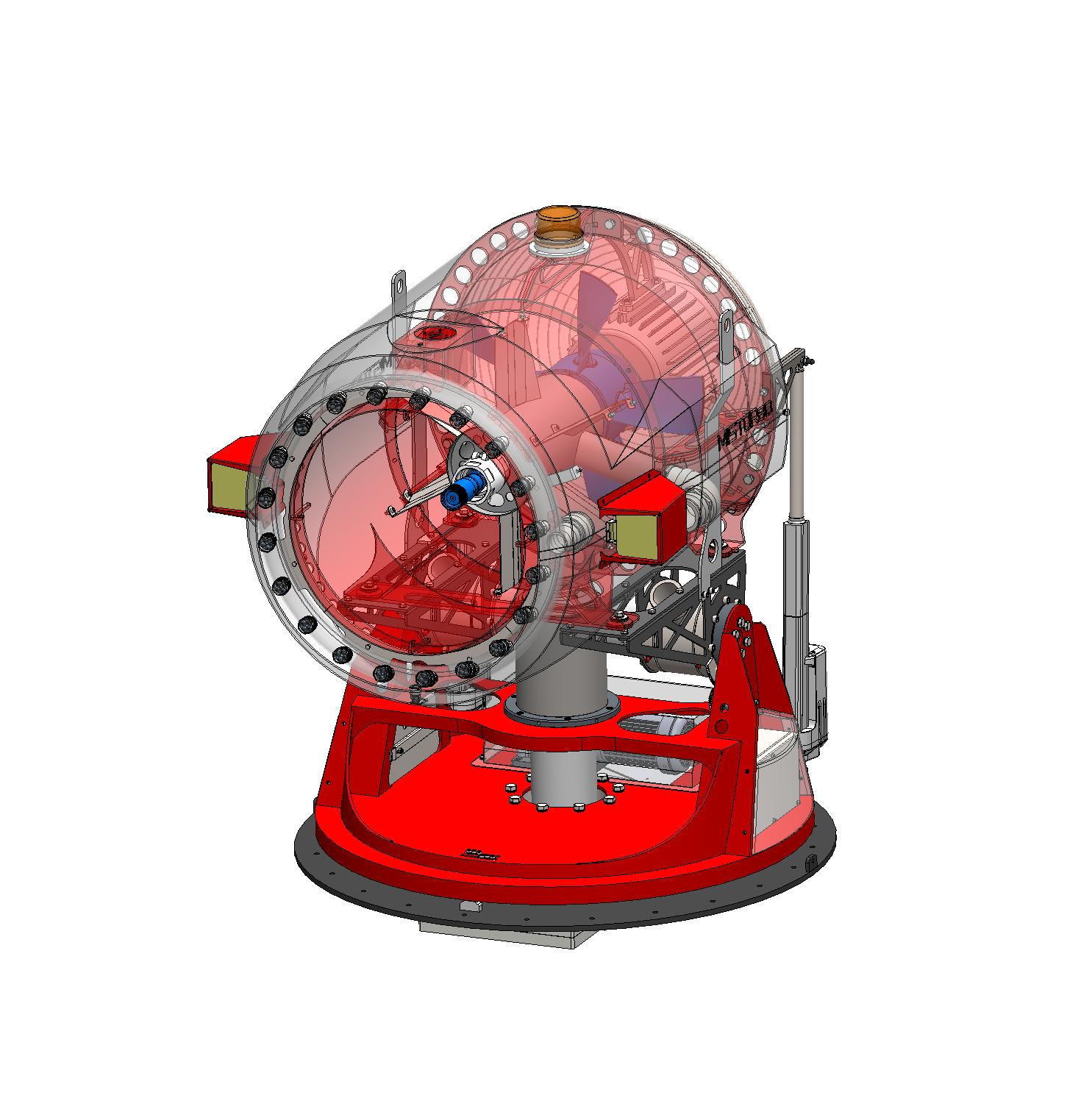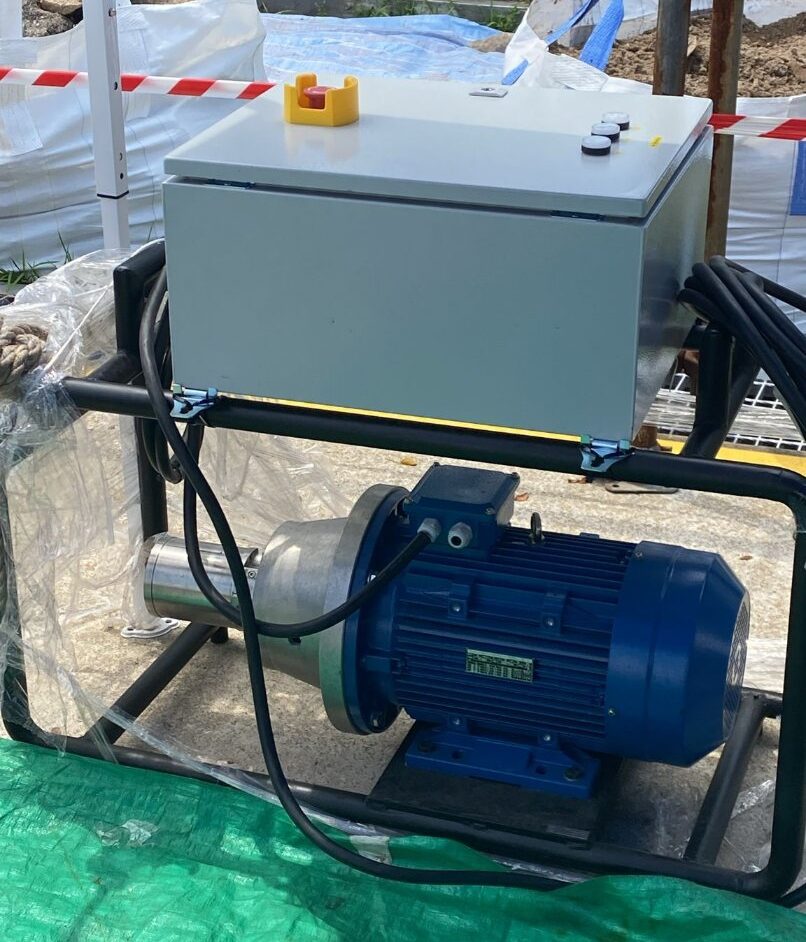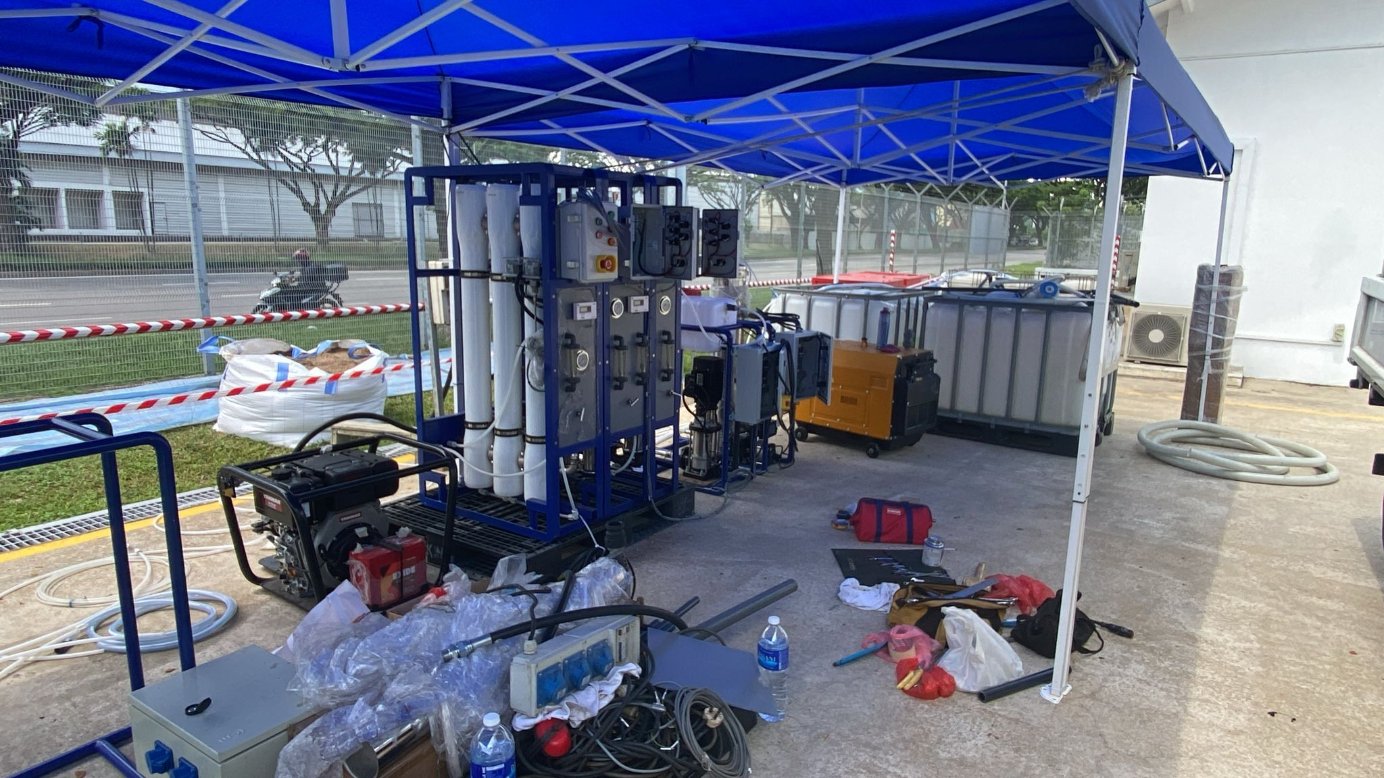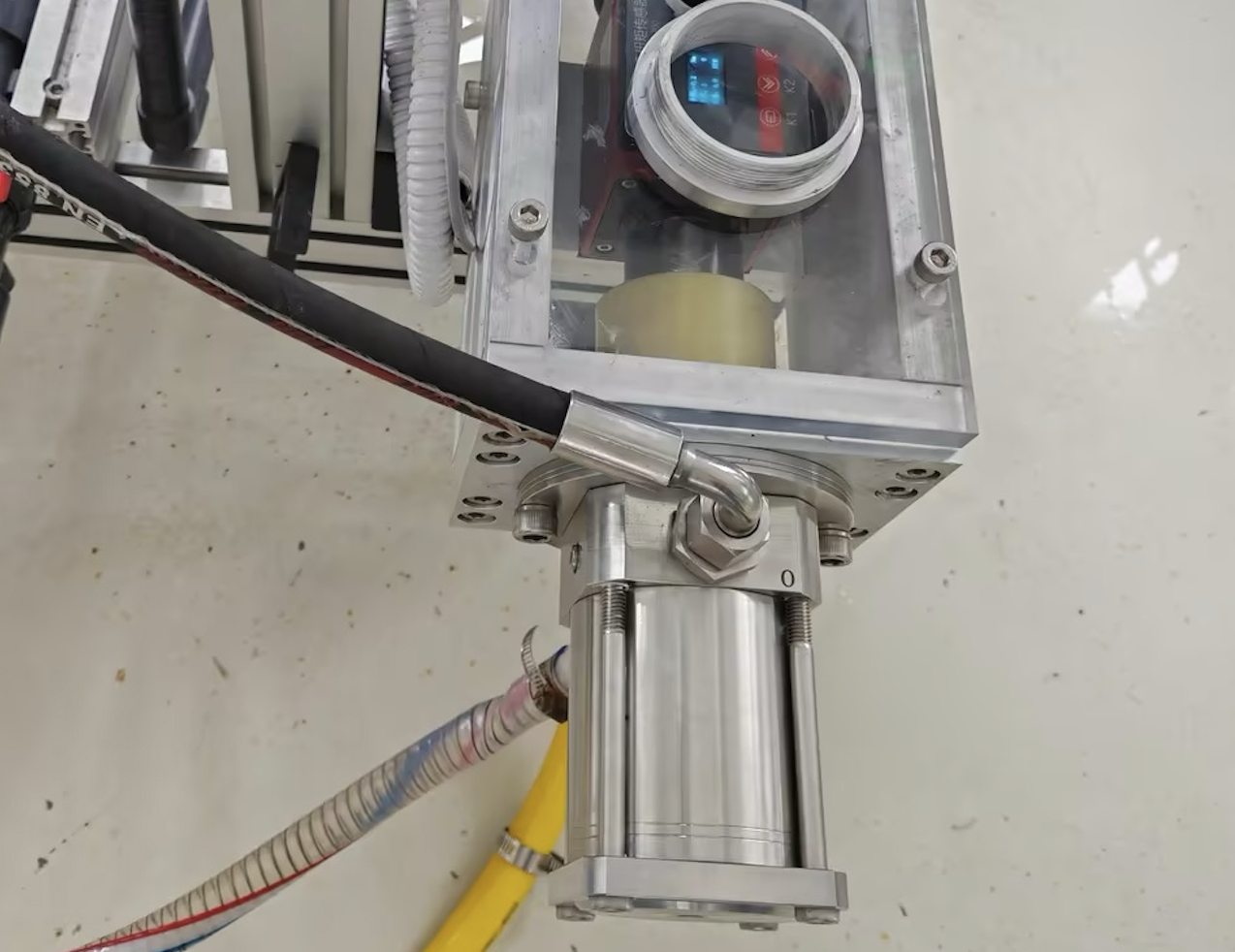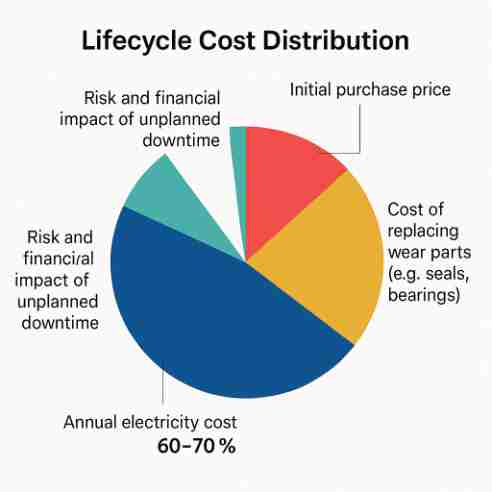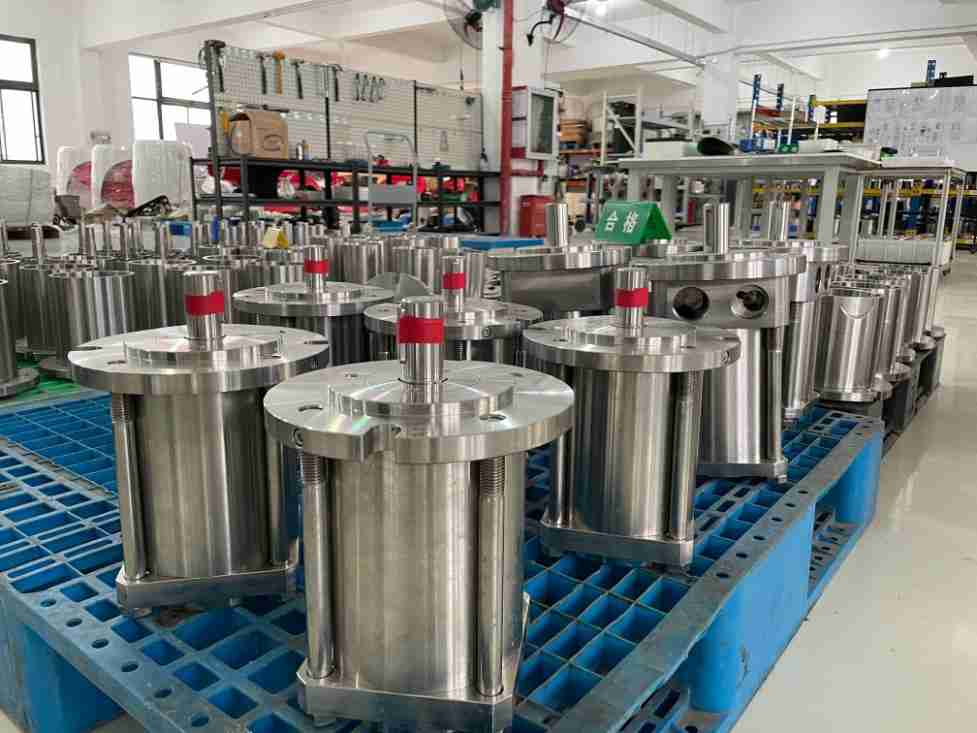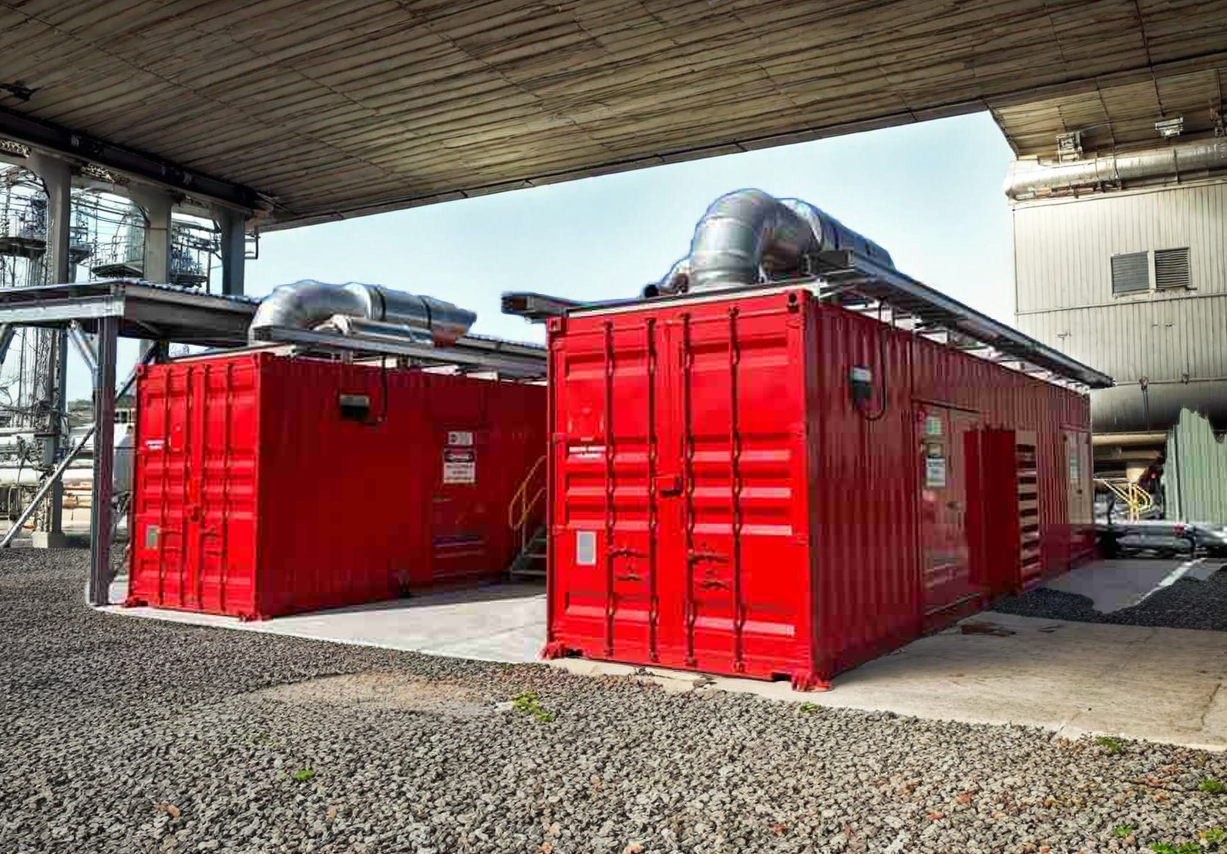Water mist fire fighting systems are increasingly used due to their efficiency, eco-friendliness, and safety. As a critical component of these systems, Rohre high-pressure pumps deliver exceptional performance with low energy consumption and outstanding reliability. This white paper explores the technical principles, product features, and real-world applications of Rohre pumps in water mist fire fighting systems.
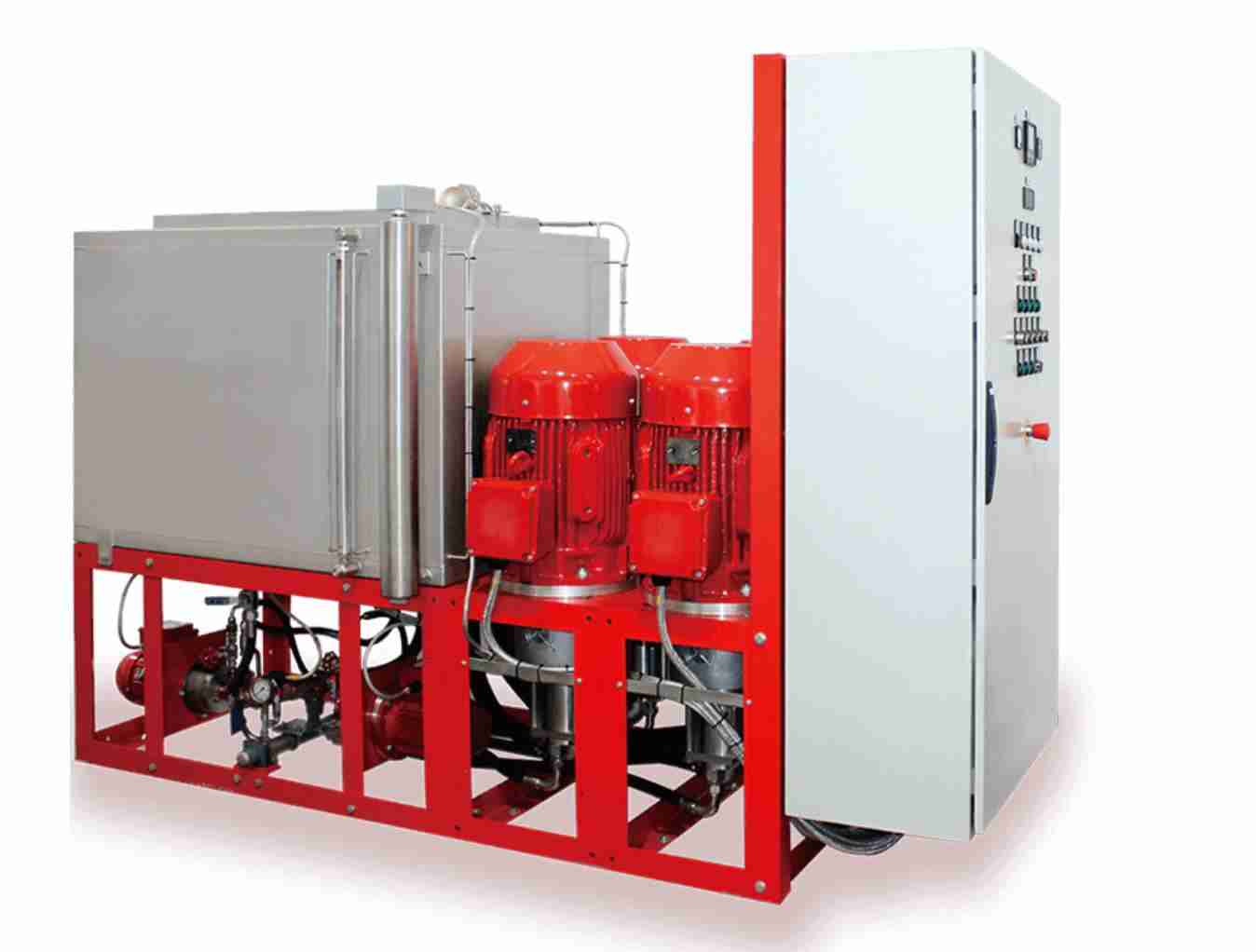
What is Water Mist?
Water mist refers to ultra-fine water droplets that meet specific size criteria under the system’s minimum design working pressure. Specifically:
- The droplet diameter, Dv0.50, representing the size below which 50% of the total liquid volume exists, must be less than 200 μm.
- The droplet diameter, Dv0.99, representing the size below which 99% of the total liquid volume exists, must be less than 400 μm.
These fine droplets are formed by atomizing water through high-pressure nozzles, producing a dense mist that behaves differently from conventional water-based fire suppression systems. The small droplet size enhances heat absorption and evaporation efficiency, enabling effective fire suppression with minimal water usage.
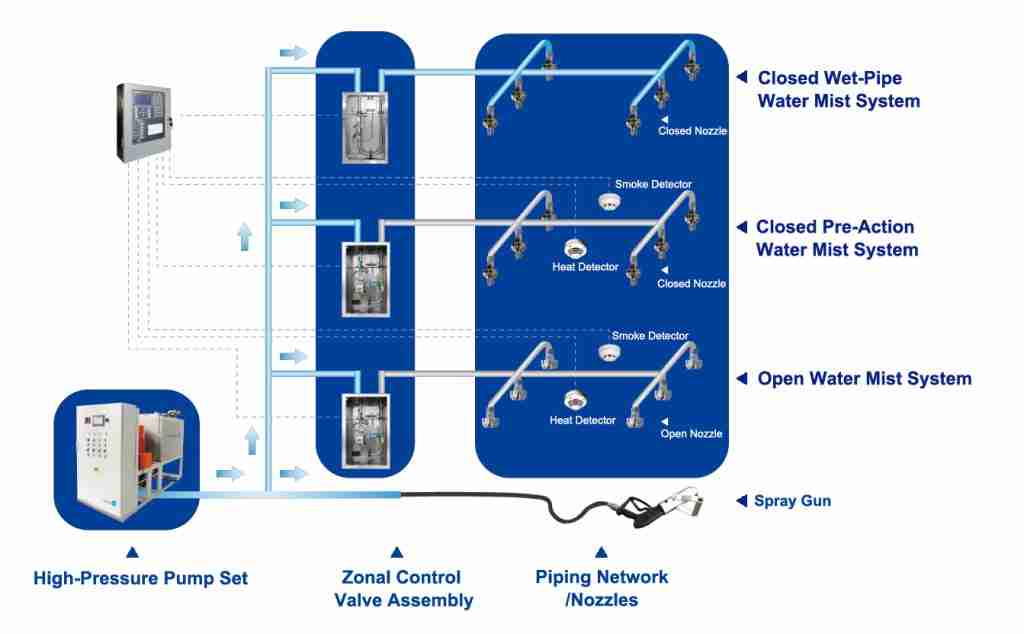
Table of Contents
ToggleWhat is a Water Mist Fire Fighting System?
A water mist fire fighting system is a comprehensive fire suppression system composed of multiple integrated components working together to deliver effective and efficient fire protection. The primary components include:
- Water Storage Unit: Supplies the necessary volume of water for the system’s operation.
- Driving Unit (Pressure Pump Set): Generates the required high pressure to atomize water into fine droplets.
- Zonal Control Valve Groups: Regulate the flow of water to specific areas or zones based on the fire’s location.
- System Piping Network: Distributes water to the nozzles efficiently.
- Water Mist Nozzles: Atomize water into ultra-fine droplets, creating the mist.
- Control Devices: Manage the system’s operation and integration with other fire protection systems.
- Automatic Fire Detection and Alarm Systems: Detect fires early and activate the water mist system.
This integrated approach ensures rapid response to fires, efficient suppression, and minimal damage to protected areas and equipment.
Water Mist Fire Fighting System Working Principle
Water mist fire fighting systems rely on multiple physical and chemical processes to suppress fires effectively and efficiently. The core principles include rapid heat absorption, oxygen displacement, radiant heat blockage, and smoke absorption.
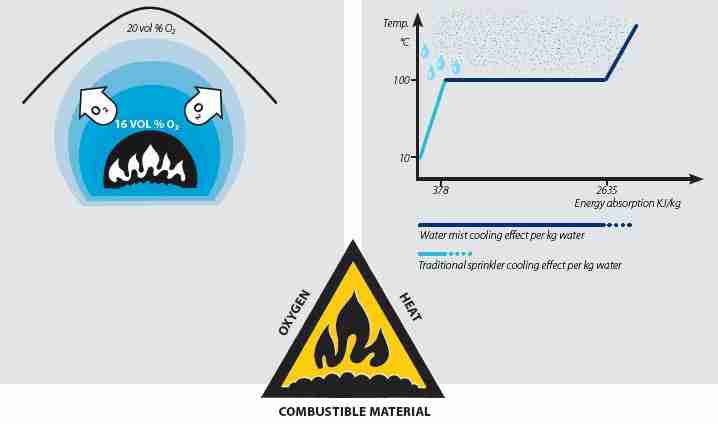
1. Efficient Heat Absorption — Rapid Cooling
Water mist consists of highly concentrated fine droplets that quickly absorb heat from the fire’s surface and surrounding air.
- This cooling effect lowers the temperature of combustible materials, halts fire propagation, and extinguishes flames in a short period.
- The surface-area-to-volume ratio of water mist is tens of thousands of times higher than conventional water systems.
- When the mist droplets evaporate, they absorb large amounts of heat, leading to a rapid temperature drop in the combustion zone.
2. Rapid Evaporation — Oxygen Displacement
When water mist enters the fire zone and heats up, it undergoes rapid vaporization, expanding into steam:
- Water vapor expands up to 1,680 times its original volume during the evaporation process.
- This expansion displaces oxygen in the fire environment, limiting its availability to sustain combustion.
- The oxygen concentration around the flame drops to levels insufficient for continued burning, causing the fire to suffocate.
Radiant Heat Blockage — Suppressing Fire Spread
Water mist forms a dense vapor layer within the fire area that effectively blocks radiant heat:
- Radiant heat from flames, embers, and smoke particles is absorbed and scattered by the mist.
- This prevents heat transfer to adjacent combustibles and surrounding structures, reducing the likelihood of fire spread.
- By isolating the fire source, water mist systems protect human life and minimize property damage.
Smoke Absorption and Hazard Mitigation
In addition to extinguishing flames, water mist systems interact with smoke and toxic particles:
- Fine water droplets bind to smoke particles, increasing their mass and causing them to settle rapidly.
- This reduces airborne particulate matter, improves air quality, and mitigates health risks from toxic gases such as CO and HCl.
- By suppressing smoke, water mist systems also improve visibility and facilitate safe evacuation during fire incidents.
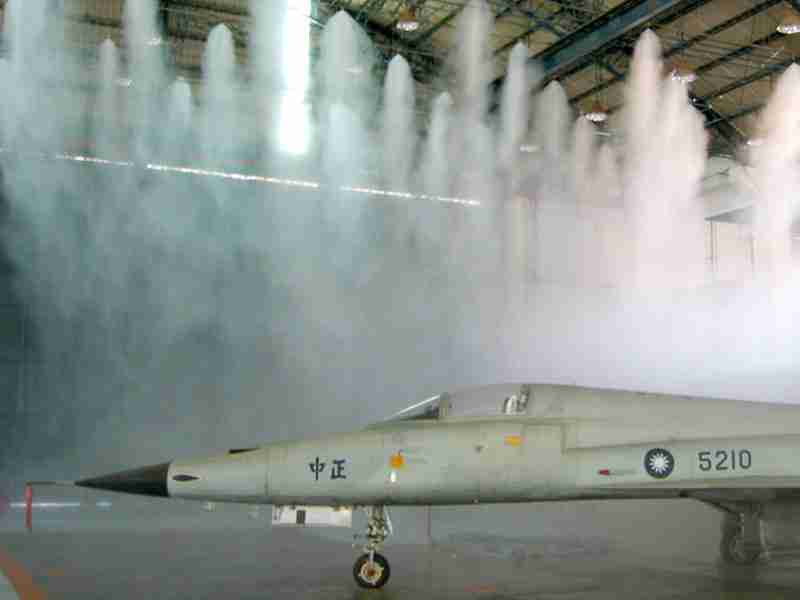
Types of Water Mist Fire Fighting Systems
Water mist fire fighting systems are categorized based on their activation and operational principles. These systems offer tailored fire suppression solutions across various applications.
Closed Wet-Pipe Water Mist System
In the ready-to-operate state, the piping is kept pressurized with water supplied by a fire water tank or pressure-maintaining pump.
- When a fire occurs, the thermal element in the closed water mist nozzle activates due to rising hot air.
- The nozzle opens, releasing fine water mist into the fire zone.
- At the same time, water flows through the previously static pipes, triggering the signal feedback device.
- A signal is sent to the fire alarm control panel, indicating water mist activation in the specific zone.
Closed Pre-Action Water Mist System
In the standby state, water is maintained under pressure up to the inlet of the zonal control valve, while the outlet side of the piping remains filled with low-pressure gas.
- During a fire, fire detectors installed within the protected area detect the incident and send an alarm signal.
- After verification by the fire alarm controller, the zonal control valve is triggered automatically.
- Water displaces the gas in the downstream piping, converting the system into a wet-pipe system.
- Once the thermal element in the nozzles activates, fine water mist is discharged immediately, ensuring swift fire suppression.
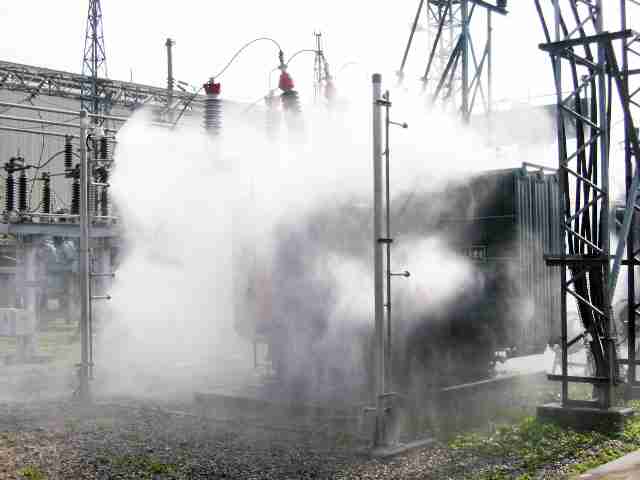
Open Water Mist System
In this system, the piping network and nozzles are open, and activation is initiated by a fire detection system.
- When a fire is detected, the fire alarm system sends signals to the alarm controller, simultaneously triggering visual and audible alarms.
- The controller issues commands to activate the zonal control valve and driving unit.
- Fine water mist is discharged through open nozzles, directly targeting the fire and surrounding area to extinguish flames efficiently.
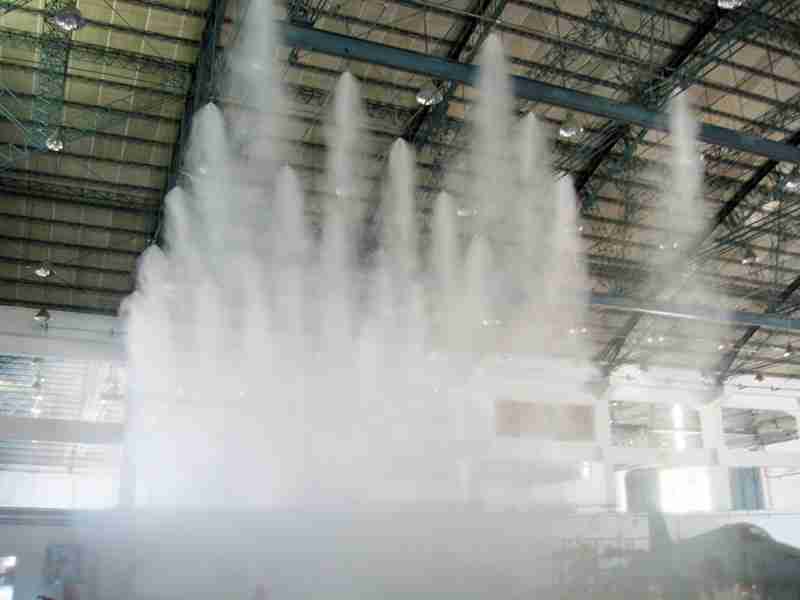
Rohre High-Pressure Plunger Pumps are designed to serve high-pressure water mist systems with exceptional reliability and performance.
- Operating Pressure: Not less than 10 MPa (100 bar).
- Droplet Size: Ultra-fine mist with Dv0.99 < 100 μm, ensuring superior atomization and efficient fire suppression.
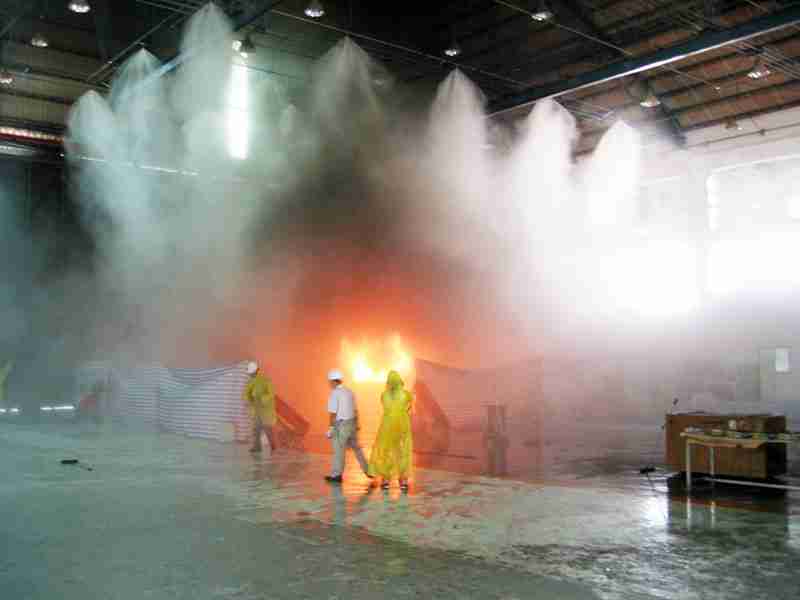
Cost Comparison High-Pressure Water Mist Systems VS. Other Fire Suppression Systems
When analyzing the cost-effectiveness of high-pressure water mist systems compared to other fire suppression methods, several key factors stand out: installation costs, maintenance, operational efficiency, and protection area.
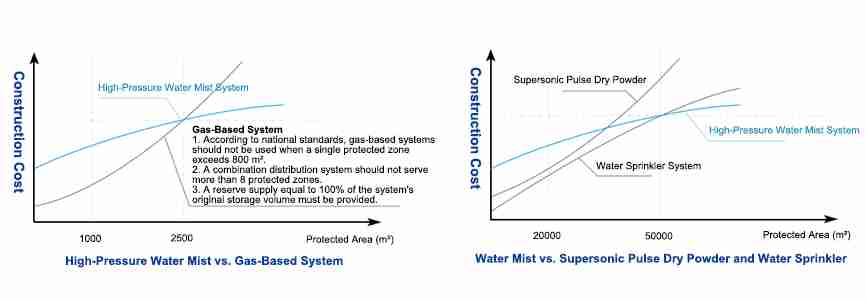
Fire Suppression System Comparison Table
| Criteria | Gas-Based Systems | Automatic Sprinkler Systems | High-Pressure Water Mist Systems |
| Fire Suppression Efficiency | No sustained suppression; requires sealed spaces. | Relies on water; two-dimensional coverage, low efficiency. | Rapid, three-dimensional suppression; blocks radiant heat. |
| Safety and Environmental Impact | Safety risks: explosion, toxicity, and leaks. | No smoke toxicity control; limited cooling effect. | Neutralizes smoke toxicity; efficient cooling; low water usage. |
| Fire Damage | Risk of harmful gas release; damages equipment. | High water usage causes significant damage. | Rapid suppression with minimal water; protects sensitive assets. |
| Application Scope | Unsuitable for open or occupied spaces. | Not ideal for electrical or water-sensitive areas. | Suitable for most environments, including industrial and commercial spaces. |
| Maintenance and Lifecycle Costs | High cost: refilling, managing cylinders; short lifespan. | Prone to corrosion; requires frequent maintenance and high replacement costs. | Maintenance-free pumps; anti-corrosion technology; low maintenance cost, long lifespan. |
Conclusion
Rohre has extensive experience in delivering axial piston high-pressure pumps for water mist fire fighting systems. Our pumps ensure reliable performance, precise pressure control, and efficient fire suppression, making them the ideal solution for protecting life and property.
Discover how Rohre pumps can enhance your water mist fire fighting systems. Reach out to our team for expert advice, technical support, or a tailored solution to meet your project needs.


